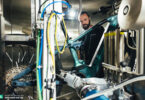The most important question for most eMTBersis the maximum range. However, you should probably be asking yourself which eMTB battery concept suits you the best! You can find an overview of all the most popular battery solutions, as well as some less common ones, here.
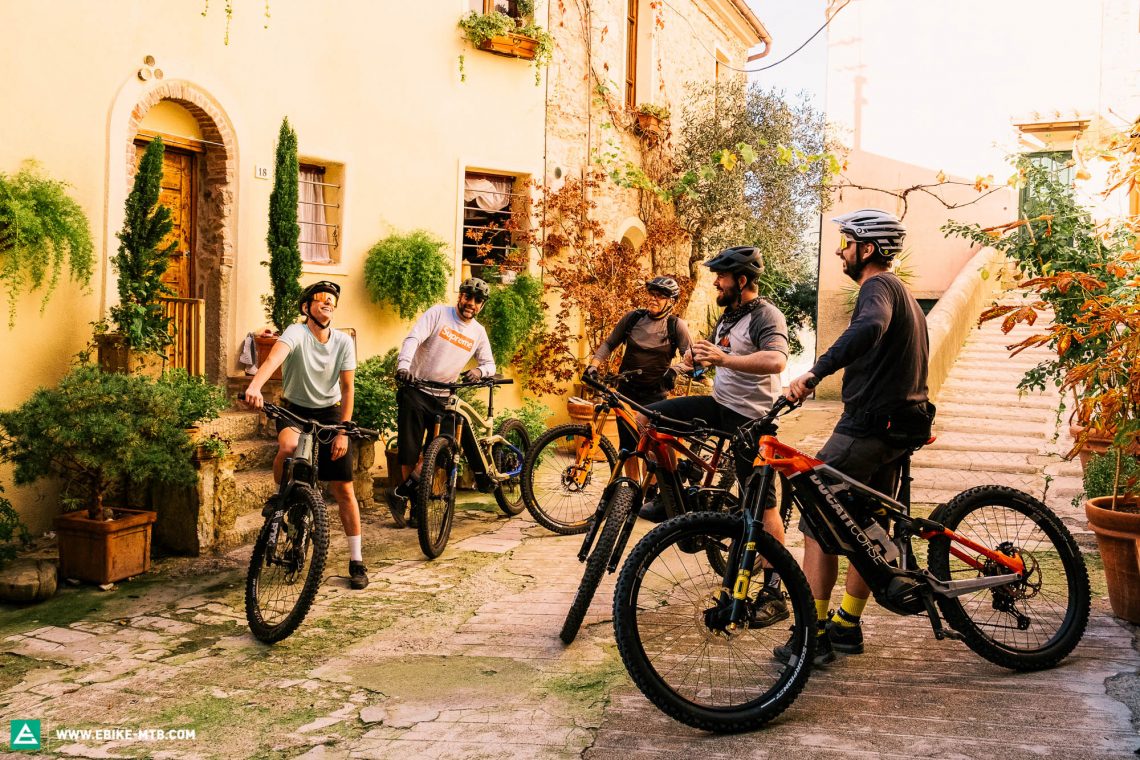
The first question you should ask yourself is: “How do I ride my E-MTB? Or more importantly, how do I want to ride it?”. This way you will find out which battery concept suits you best. Do you spend the majority of your ride in Eco mode or at full power? What about your weight? Riders weighing more than 90 kg will suit a different battery system than those weighing in at 60 kg. How far is the furthest ride you want to do and what elevation gain does it include? Depending on the intended use of your E-bike either modular concepts, integrated batteries or external batteries will make the most sense.
Standard system

Internally integrated batteries have become standard on eMTBs. The advantages of internal batteries are mainly down to the look and usually the option of mounting a bottle cage in the front triangle. Our experience and the results of our reader survey show that you seldom need more than the standard internal battery capacity, ranging from 500 to 750 Wh depending on the model.
Who is this for?
Basically for everyone. Only riders who plan on riding very long distances, ride in very mountainous terrain with a lot of climbs, are very heavy or consistently use the highest support mode might need more battery capacity.
Tops
- very balanced handling
- optimal frame integration
- usually accommodates a bottle cage in the front triangle
- streamlined design
Flops
- none
Costs
- none
Interchangeable battery
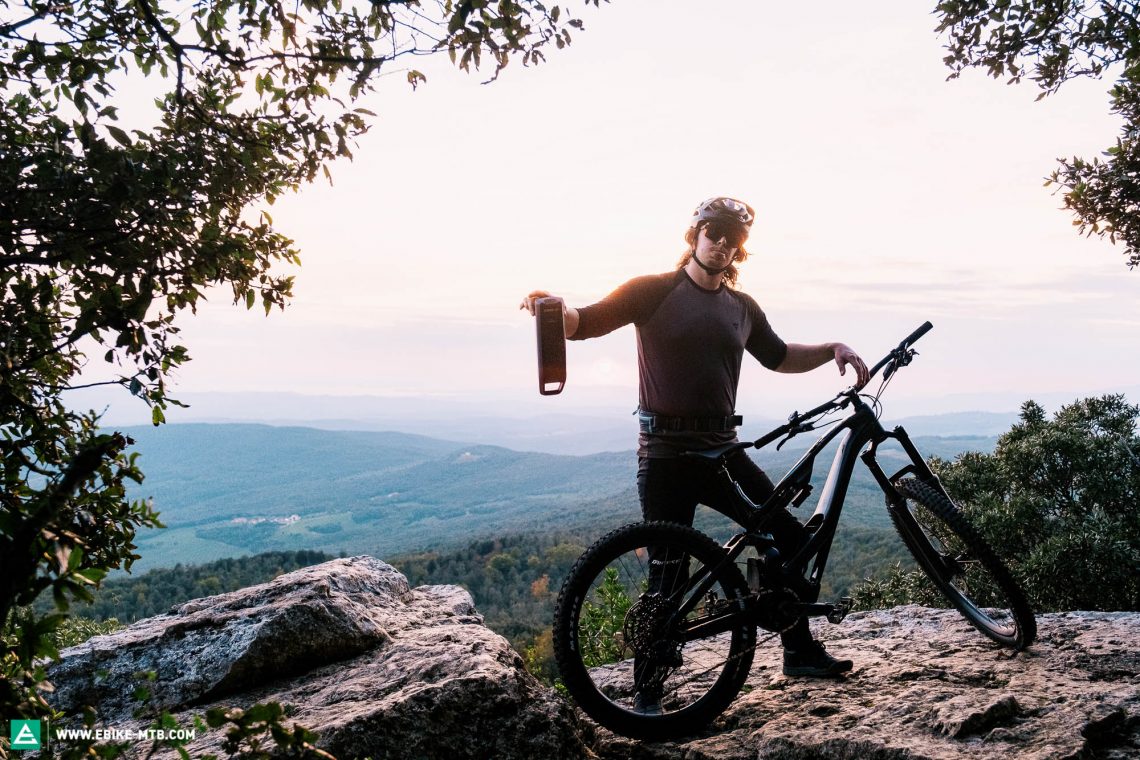
Interchangeable batteries are the simplest addition to the standard system if you want more range.
Who is this for?
If you do a lot of riding bike parks or trail centres, you can quickly swap the battery in your lunch break and put the other one on charge. For the occasional long-distance ride or Alpine epic, you can carry the replacement battery in a special ebike backpack with a back protector, though you’ll have to be okay with additional weight on your back.
Tops
- lots of flexibility
- no restrictions on bike handling
- you quickly swap the battery; offers sufficient capacity
Flops
- when transported in a backpack: additional weight on your back instead of the bike
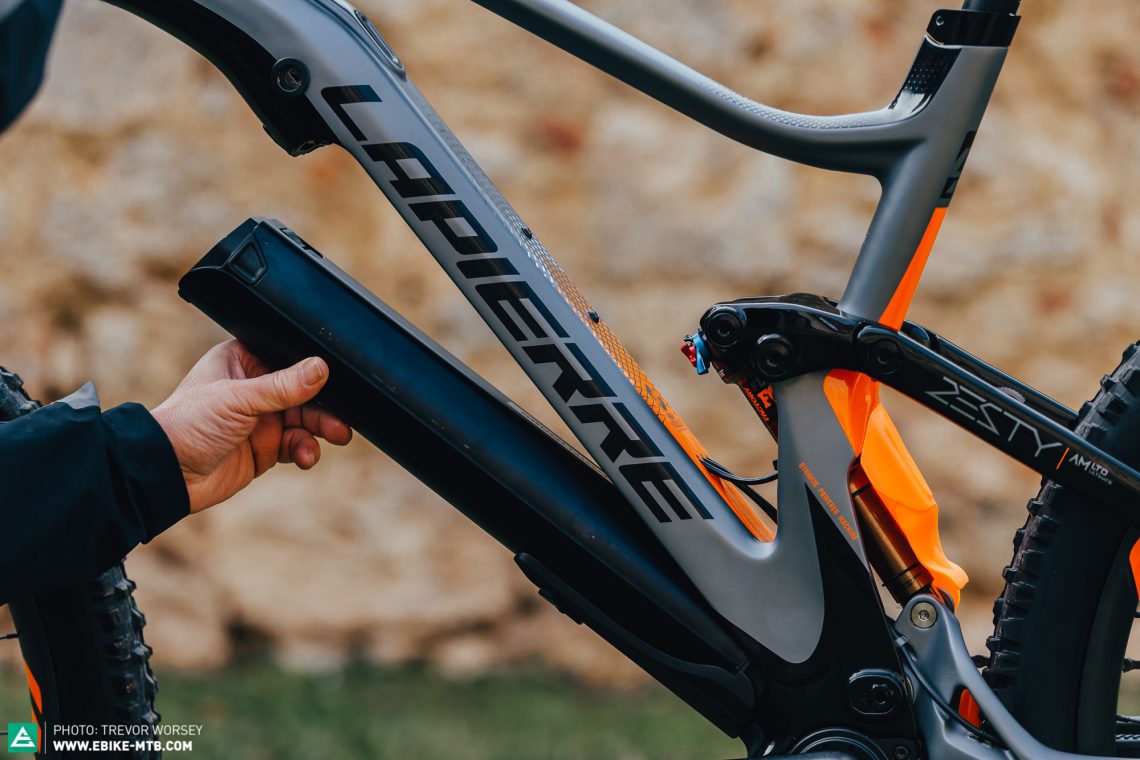
Costs
- Specialized 700 Wh: € 1,300
- Bosch PowerTube 625 Wh (vertical/horizontal): € 899
- Bosch PowerTube 500 Wh (vertical/horizontal): € 759
- Fazua Battery 250, 252 Wh: € 418
- Fazua Battery 250X, 252 Wh: € 429
- Shimano BT-E8010, 504 Wh: € 589
- Shimano BT-E8035, 504 Wh: € 669
- Shimano BT-E8036, 630 Wh: € 799
Dual battery system
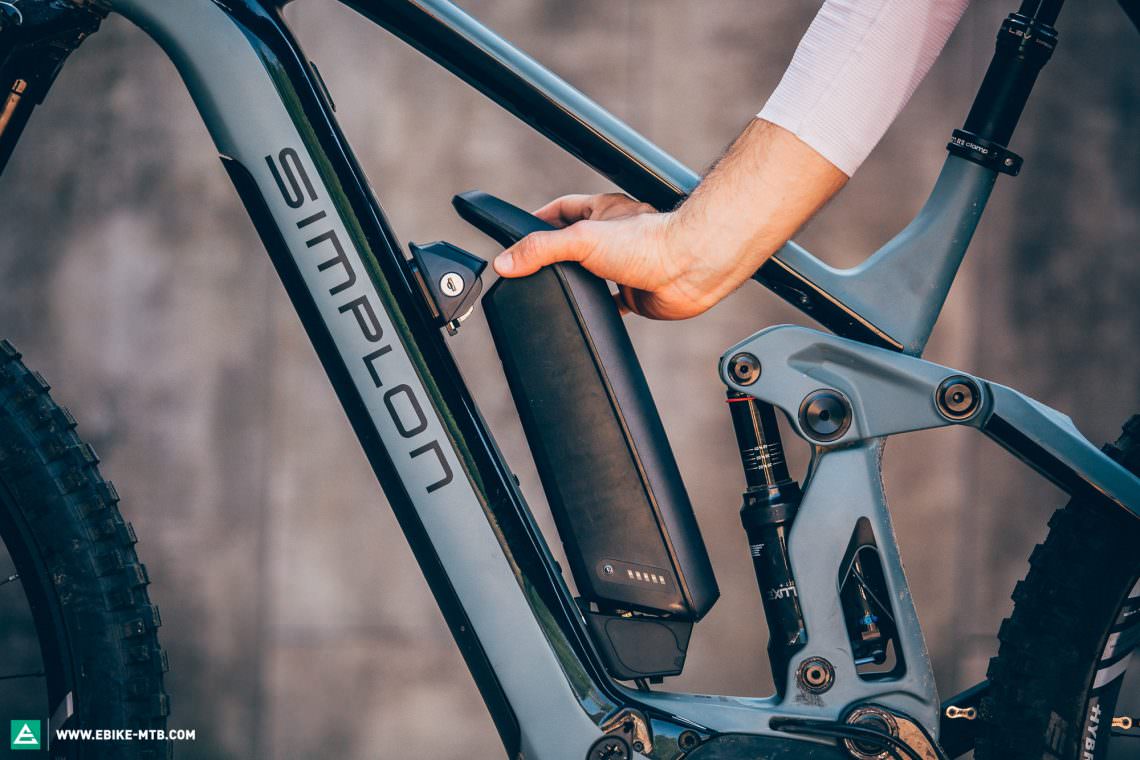
Dual battery systems expand the capacity of a standard battery with a modular additional one. An integrated standard battery with a 500–630 Wh battery is combined with an optional, usually external, battery (250–500 Wh) which can be attached to the down tube of the bike. Examples of brands using this system include SIMPLON, Orbea, Norco, and GIANT. For eMTBs with more of a focus on long tours like the Riese & Müller Superdelite, concepts with two integrated batteries in the frame are available. Here, the second battery can also be removed. The resulting space can be used as a storage compartment and the ebike ridden with just one battery.
Who is this for?
Dual battery systems are ideal for heavy riders and those who often ride longer distances. They’re also perfect for rides in places without the appropriate charging infrastructure or Alpine epics.
Tops
- Depending on the design, there are no drawbacks compared to the standard system without the additional battery attached
- Some bikes will accommodate a bottle cage as long as the additional battery isn't taking its place
- makes extreme capacities of 1,250 Wh possible
Flops
- Additional battery changes the handling
- On some bike, the bracket for the additional external battery spoils the looks
Costs
- Orbea: € 719 for PowerPack 500 + € 199 for the battery mount
- SIMPLON: € 950 for battery + € 130 for mount
- Norco: € 499
- GIANT:. € 479.90
Light eMTB
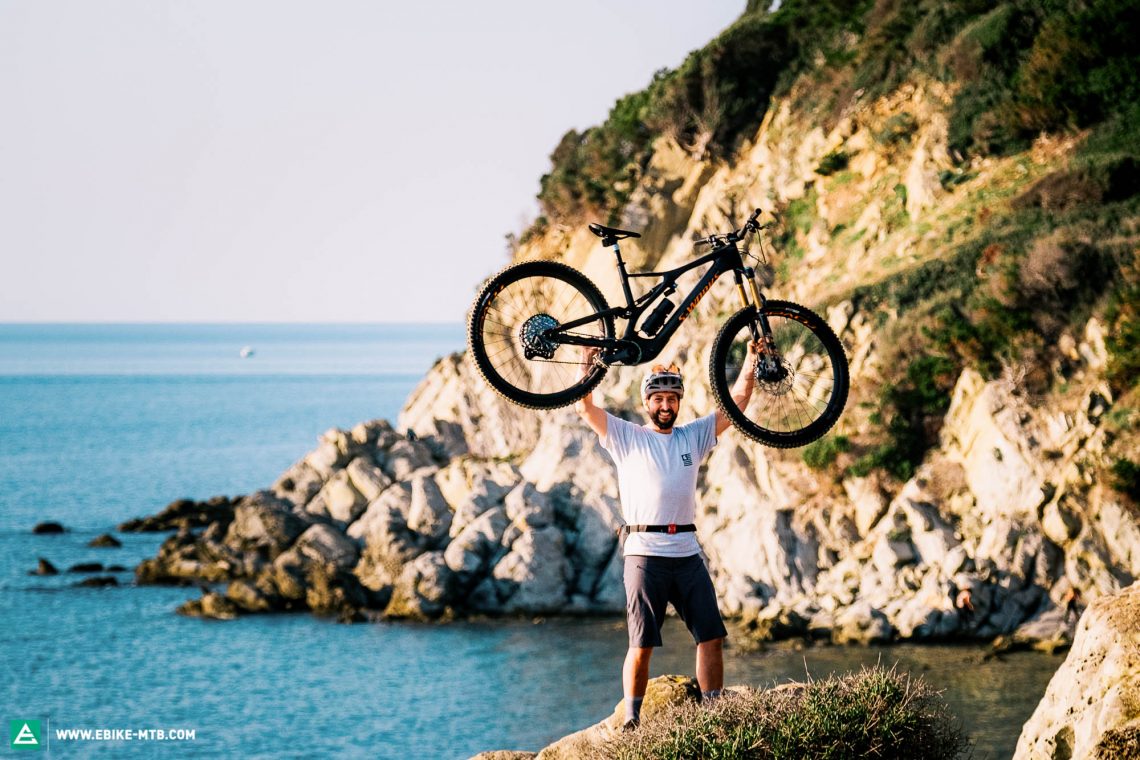
Light eMTBs are revolutionising the market and resulting in a completely new type of ride for ambitious trail pilots, just as much as tourers and everyday riders. The concept combines multiple aspects, including a motor/battery concept with reduced maximum power, good modulation and a natural ride feel, as well as providing more freedom for frame design and geometry. The low weight makes a package possible that delivers a completely new ride feel and handling. With 252–375 Wh capacities, the integrated batteries in Light eMTBs are, on average, half the size of those found in conventional ebikes. That doesn’t automatically mean that they have just half the range though. Due to the usually lower level of motor assistance and the lower weight, similarly long tours as with traditional ebikes and a standard battery are possible with Light eMTBs, even if they do require more physical effort.
Who is this for?
Light eMTBs make sense for all those looking for a light-footed and agile eMTB. Lightweight riders and any one of you who usually ride in the most frugal Eco mode could find an interesting option here too. Light eMTBs are also ideal for analogue mountain bikers who want to ride more trails and suffer less while climbing to the top, without sacrificing the agile handling they are used to on the way back down.


Tops
- balanced and natural handling
- lots of freedom for frame designs
- lightweight
bottle cages usually fit the main triangle - good design thanks to optimum integration
Flops
- usually less motor assistance
Costs
- none
Range Extender

The range extender counts as a modular battery concept and is a subcategory of the dual-battery concept, expanding the battery capacity of Light eMTBs and bikes with a small fixed battery. It can either be plugged into a mount on the bike like the FOCUS T.E.C Pack, or, like the Specialized Levo SL, finds room in the bottle cage. A cable connects the additional battery directly to the charging port of the ebike. With a range extender, bikes with a small main battery (which are sometimes fixed in place, like on the Orbea Rise) can be equipped for longer rides. The capacities for range extenders range from 160 to 378 Wh.
Who is this for?
Range extenders are a suitable battery concept for everyone who wants to be able to ride their post-work laps as well as occasional longer tours with more metres ascending, on just one bike. Without an additional battery, this concept provides all the advantages of nimble Light eMTBs. With one, the ebike becomes well-suited to longer tours too.
Costs
- Orbea Range Extender 252 Wh: € 499
- Specialized SL Range-Extender 160 Wh: € 369.90
- FOCUS T.E.C. Pack 378 Wh: included with 2020 T.E.C. Pack System models
Tops
- without the additional battery, usually better and more light-footed handling than standard systems with 500–700 Wh batteries
- no unnecessary weight for short rides
- flexibility
Flops
- extra battery takes up space in the bottle cage
- internal battery not removable for all systems, with charging required on the bike
Fast charger

Besides the standard chargers, most motor manufacturers offer smaller travel chargers and larger fast chargers.
Who is this for?
Fast chargers are ideal for charging your bike at the trail centre, bike park or on long rides. We’ve already charged our bikes in pizzerias, at mountain cabins and in bike parks, but before you go plugging your charger into any outlet you find, please ask 😉 The only downside to fast chargers is that they are a lot larger and heavier than regular chargers. For further information you can read our article on fast-chargers.
Depending on the brand, there are big differences in the speed of the charging times – especially with Bosch and Shimano, we don’t see the “fast” in their “fast-chargers”. Here you have to ask yourself whether the slightly faster charging time is worth the extra cost. With Bosch you save about 1.5 hours for a full 500 Wh charge compared to the standard device. With the TQ system, you save 1 h 40 min to fully charge a 630 Wh battery.
- TQ 10-A fast-charger: approx. 80% of 630 Wh in 1 hour
- GIANT Smart-Charger: approx. 60% of 500 Wh in 1 hour
- Bosch fast-charger: 40% of 500 Wh in 1 hour
- Shimano STEPS EC-8004: 80% of 630 Wh in 3 hours
Tops
- no restrictions
- less weight than an additional battery in your backpack
Flops
- additional weight has to be carried on tours
- fast charging can reduce the life of the battery
- some fast chargers only have “fast” in the name
Costs
- Shimano STEPS EC-8004: € 174.95
- Bosch fast-charger: € 169
- GIANT SmartCharger: € 179.90
- TQ 10-A fast-charger: € 349
In the biggest E-MTB test in our history, we go into detail on this and many more exciting findings. If you want to know what the best E-MTB currently available is, and what really makes a good e-mountainbike then give it a read!

Did you enjoy this article? If so, we would be stoked if you decide to support us with a monthly contribution. By becoming a supporter of E-MOUNTAINBIKE, you will help secure a sustainable future for high-quality cycling journalism. Click here to learn more.
Words: Felix Stix, Robin Schmitt, Jonas Müssig Photos: Finlay Anderson, Robin Schmitt, Felix Stix, Valentin Rühl, Trev Worsey







